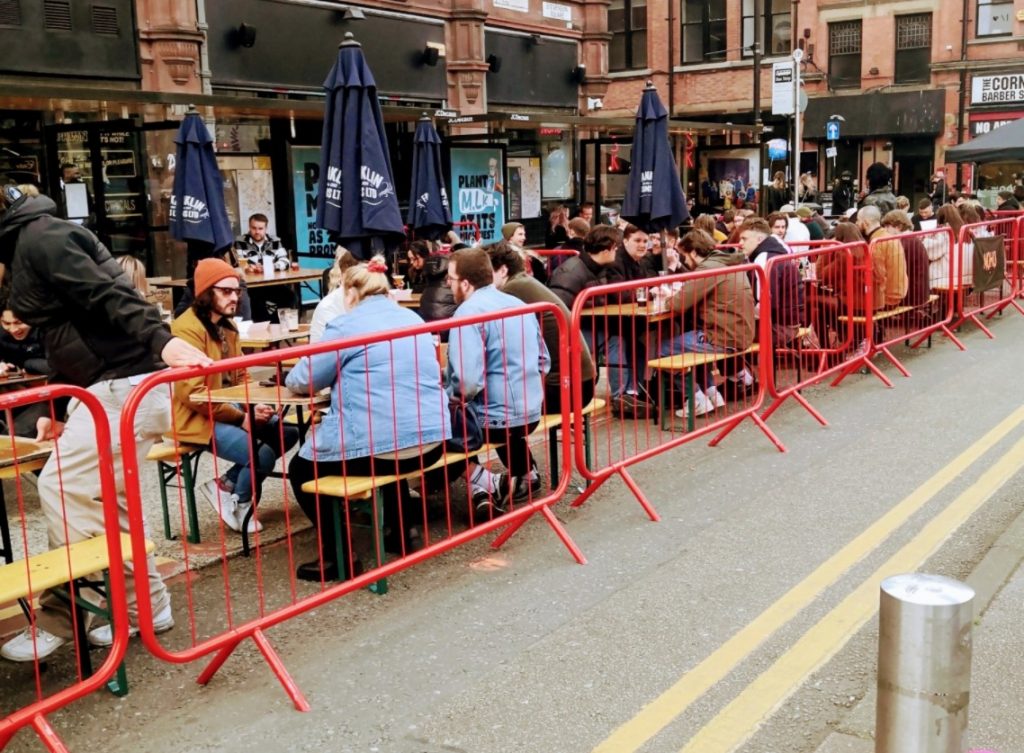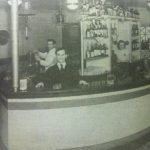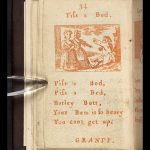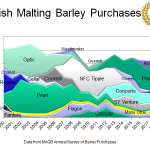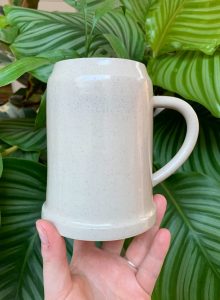I will be positive. I will try to be positive. That’s what I say to myself. Every week. I will try. I do try. But it is trying, isn’t it. Not even sure it is all that interesting. Far better being interesting than being positive. That’s why #ThinkingAboutDrinking >>> #BeerPositive. Not schmarmy. No need of that. Nope. I will try to be interesting. I will be interesting. I will. I will try.
As a start, it was interesting to see in The Telegraph the vision above of Canadian PM Justin Trudeau looking like Castro and Zappa’s love child while drinking a pint of ale as HRH The Queen had her back turned and Chuck looked pained but also comfortably numbed by the gin. By way of my review, an excellent G7 moment captured. Canadian politicians must love beer.
Elsewhere, there are few people writing about beer these days as interesting as Dr. Christina Wade of Braciatrix who wrote this week about a topic near and dear to my heart – beery references on cuneiform tablets within the records of Sumerian society:
Administration was a key part of these organizations. According to Peter Damerow, beer was not a simple agricultural product but, ‘belonged to the products subjected to the centralised economy of Sumerian states’. Indeed, he stated that the consumption and production of beer were separate entities and beer held this positon even after the decline of Sumerian culture.
I say near and dear as I wrote of a similar thing in 2017, shared that info and had a merry chat with the good doctor.
Sticking with history, Martyn also wrote an extremely interesting piece this week drawing information out of the William Helliwell* diaries of the 1830s (much discussed in Lost Breweries of Toronto) that Jordan shared – and then contextualizing the info into London’s porter scene of that time:
William seems to have seized every chance to look round breweries on his journey: he visited two in Rochester, New York state and two more in nearby Albany on his way to New York to catch a ship to England, where he arrived in mid-June after a six-week journey from Canada. In London he had an introduction to Timothy Thorne, owner of the Westminster Brewery on Horseferry Road, from Thorne’s son Charles, whom William knew in York. The brewery, which made ale and porter, had been founded by Timothy Thorne in 1826.
Leonard Lispenard of NYC took a similar trip in 1783 and trained under his cousins the Barclays. Did he keep a diary? Hmm…
Even more recent history was discussed by Boak and Bailey as they wrote about the demise in the later 1980s of a traditional pub in London’s Docklands, victim perhaps of a misplaced application of the new Duran Duran laced lifestyle:
We came across this small story of the loss of a specific pub through ‘Eastenders’, an episode of the ITV weekly documentary series World In Action available via BritBox. Jess being a Londoner, and Ray being a hopeless nostalgist, we often find ourselves watching this kind of thing and there’s invariably a pub somewhere among the grainy footage.
Never a good look for a writer to look for an expert to confirm a premise after the article’s been approved. Far more interesting was Max’s walk to Litoměřice:
I needed to have my computer serviced, which meant that I would have to do without it for a couple of days, which meant that I wouldn’t be able to do much else than fuck all at home. The thing had been acting up for some time already – some issue with the hard drive – and I’d decided to wait until I finished with a couple of big projects I was working on, always hoping it wouldn’t give up on me. It didn’t, and the timing could not have been any better. With the covid restrictions on all the fun stuff mostly lifted, and the weather finally nice, now I had the perfect excuse to take a couple of much needed days off to partake in one of my favourite activities: getting a train or a bus somewhere to go on a long walk in nature, with a brewery as destination.
Sadly but interestingly so, the car crash within the wider sexism in craft car crash that is the Brewdog story keeps on giving and it is always wonderful when a beery bit of news gets the attention of someone in journalism** like this excellent balanced opinion piece by Camilla Long in The Sunday Times:
Will anyone now work for Brewdog? Thirty years ago the answer would probably have been a grudging yes. For people over 40, a cut-throat, stressful working environment — or as Brewdog’s founder put it, “a fast-paced culture” — is still closely associated with good results… But if you are under 40, the idea of working for somewhere that isn’t calm and friendly is horrifying. Young people simply won’t work for places that don’t offer good vibes. In America, where companies these days can’t hire people fast enough, hotels are offering free holidays and stays to attract good staff. Jobs are competing for people, rather than the other way round.
People still looking for a better placement within the beer industry don’t get that direct in their writing. As usual, Matty C comes closest but still hedged the best with the unfortunate use of “snafus” and describing Brewdog’s investors as “wolfish” even though it was the owners of Brewdog who took the cash. As noted these hesitancies jar the reader, leave doubts. Charlotte Cook in Beer 52 also added to the story with her personal experiences as relatively early BrewDog staff:
The inability to read the room also astounded me, women are finally speaking up for the horrible treatment they have endured in the craft beer industry. The lack of an apology from James, or any assurance of the steps being taken to improve things, suggests to me that BrewDog has not yet understood the moment of change we are going through.
Who? indeed, would work there? Or buy the beer. Not even me and I used to take from them when they were wee needy advertising sponsors of this blog. Relatedly, Jemma Wilson succinctly shared her suspicions as to the Cicerone sexism situation. Gotta love an an independent investigation report that states “…Cicerone will be more responsive…” That’s not an investigative finding or even a recommendation.
Finally, Eoghan Walsh published the story of how and why Brussels’ grand new beer museum came to be:
Krishan Maudgal has worked in Belgian beer for over a decade, for the likes of Alken Maes and its well-known Abbey brand Affligem. In 2021 Maudgal was appointed to Gatz’s old position as director of the Belgian Brewers Federation, and he’s worked for the brewers on the museum concept almost from the beginning, helping to shape what the project will be – and what it won’t. “It’s not a showroom for only the international major brewers of our country,” Maudgal says. “It’s to promote the Belgian way of living. Eating, drinking, beer and food.”
There. All positively interesting. Don’t forget to check out those weekly updates from Boak and Bailey mostly every Saturday, plus more with the weekly Beer Ladies Podcast, at the weekly OCBG Podcast on Tuesday and sometimes on a Friday posts at The Fizz as well. There is a monthly sort of round up at The Glass. There is more from the DaftAboutCraft podcast, too. And the Beervana podcast. And sign up for Katie’s weekly newsletter, The Gulp, too. And check out the Atlantic Canada Beer Blog‘s weekly roundup. Plus follow the venerable Full Pint podcast. And Fermentation Radio with Emma Inch. There’s the AfroBeerChick podcast as well! And also look at Brewsround and Cabin Fever. And Ben has his own podcast, Beer and Badword – when he isn’t in hiatus as at the mo, more like timeout for rudeness. And remember BeerEdge, too. Plus a newcomer located by B+B: The Moon Under Water.
*Helliwell would likely have called himself “British” or “English” but unlikely “Canadian” as there was no unified Canada of the British sort at the time. Canada then was still the name for French Canadians given they had lived in what they called Canada since the early 1600s. There was an Upper Canada which Helliwell did live in. In Nova Scotia, Ontarians are still called Upper Canadians even though the jurisdiction ceased to exist in 1841. This is all unpacked here to another degree or so…
**meaning having qualifications which do not include being on a first name basis with the subject of the beery news story. H/T to the Tand.





